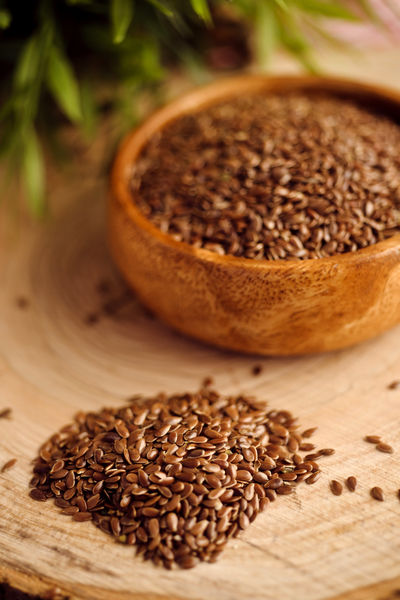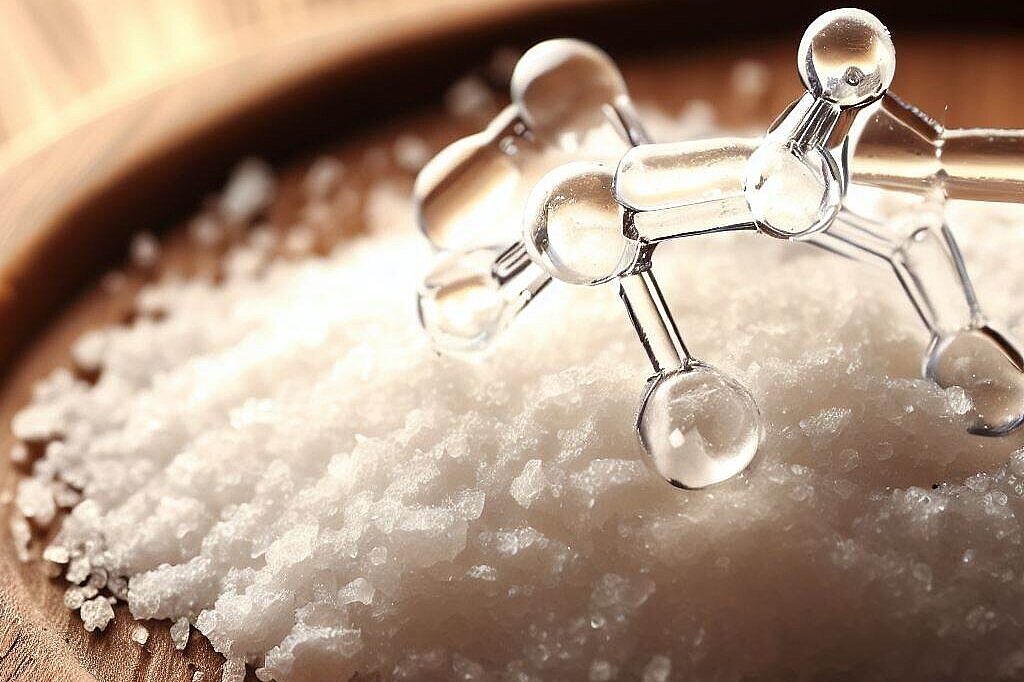Linolenic acid

What is linolenic acid?
Linolenic acid is a polyunsaturated fatty acid consisting of 18 carbon atoms and three double bonds. It is the precursor of other omega-3 fatty acids such as eicosapentaenoic acid (EPA) and docosahexaenoic acid (DHA), which also have important functions in the body. Linoleic acid is found in vegetable oils such as linseed oil, rapeseed oil or walnut oil, but also in some animal sources such as fish oil or egg yolk.
Why is linolenic acid important for dogs?
Linolenic acid has many positive effects on the health of dogs. It supports the formation of cell membranes, hormones and neurotransmitters. It has an anti-inflammatory effect and can help with skin problems such as itching, dandruff or eczema. It promotes blood circulation and can reduce the risk of cardiovascular disease. It improves learning ability and memory and can protect against dementia. It strengthens the immune system and can prevent allergies.
How much linolenic acid does your dog need?
The optimal amount of linolenic acid for your dog depends on various factors, such as his age, weight, activity level and state of health. A general recommendation is that about 0.5 to 1 percent of the daily energy intake should consist of linolenic acid. This corresponds to about half to one teaspoon of linseed oil per 10 kilograms of body weight. However, you should always ask your vet for advice before giving your dog extra fatty acids.
How can you give your dog linolenic acid?
The easiest way to give your dog linolenic acid is to mix vegetable oils into his food. You should make sure that the oils are cold-pressed and fresh, otherwise they will quickly become rancid and lose their effect. You can also use fish oil, which contains EPA and DHA as well as linolenic acid. However, you should make sure that the fish oil comes from a sustainable source and does not contain any harmful substances such as mercury or PCBs. Another option is to feed your dog linseed or walnuts, which are also rich in linolenic acid. However, you should always grind or crack them fresh, as they are otherwise difficult to digest.
What are the advantages and disadvantages of linolenic acid for dogs?
Linolenic acid has many benefits for dogs, as described above. However, there are also some disadvantages or risks that you should be aware of. Firstly, too much linolenic acid can lead to an imbalance with other fatty acids, especially omega-6 fatty acids such as arachidonic acid or linoleic acid. These are also essential for the body, but in a different ratio to omega-3 fatty acids. An excess of omega-6 fatty acids can promote inflammation and lead to health problems. You should therefore always make sure that your dog gets a balanced ratio of omega-3 to omega-6 fatty acids. A rule of thumb is that this ratio should be between 1:1 and 1:4.
On the other hand, too high an intake of linolenic acid can lead to reduced blood clotting. This can lead to increased blood loss in the event of injury or surgery. You should therefore not give your dog any additional fatty acids before such procedures or inform your vet about this.
Linoleic acid is an important fatty acid for dogs that has many positive effects on their health. You can provide your dog with linolenic acid through vegetable oils or other sources, but always in moderation and in consultation with your vet. This way you can ensure that your dog enjoys all the benefits of linolenic acid and does not suffer any disadvantages.
If you notice any signs of hypersensitivity or poisoning in your dog, you should see your vet immediately. We are not a substitute for a vet, but we try to be as accurate as possible. Every dog reacts differently and we recommend you get a second opinion or consult your vet if in doubt.
Stay healthy and take good care of your four-legged friend!😊
Similar to Linolenic acid
The benefits of linoleic acid for dogs Linoleic acid is an important building block for the formation of prostaglandins, which have anti-inflammatory and pain-relieving effects. It can therefore help...
Oleic acid has several positive effects on your dog's health. Firstly, it can reduce the risk of cardiovascular disease by regulating cholesterol levels and dilating blood vessels. Secondly, it can...
Arachidonic acid is a quadruply unsaturated fatty acid, i.e. it has four double bonds between the carbon atoms. It belongs to the omega-6 fatty acids, which are essential fatty acids. This means...
Eicosapentaenoic acid is an essential fatty acid, which means that it cannot be produced by the body itself and must therefore be obtained from food. EPA is a building block for various hormones and...



